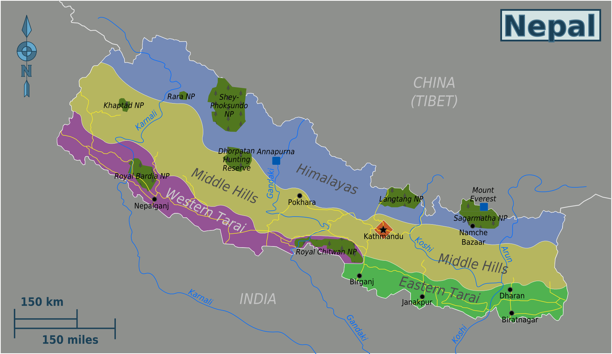Evolution is change in a population over time
In casual conversation, we might use the word evolution to describe change. I might say that my opinions have evolved over time, for example. But for a biologist, evolution refers to change not in an individual but in a population.
An example from humans: people who live in areas close to sea level may experience altitude sickness if they travel to regions at high elevation. Symptoms of altitude sickness include headache, nausea, and dizziness, among others. These symptoms are largely a result of difficulty in absorbing oxygen: although the percentage of oxygen in the air is similar at low and high elevations, the overall air pressure is lower, resulting in a hypoxic environment. (Hypoxia refers to conditions of low oxygenation.)
Initially, a person’s body may compensate for high altitude with increased breathing and heart rates. But in the first few days at high altitude, a person’s body begins to acclimate: more red blood cells are produced, increasing hemoglobin concentration, and the lungs may increase in capacity. Because these same oxygen-carrying adaptations confer a benefit to athletes, many training centers for elite athletes are located at high elevations.
These physiological changes in individual experiences are acclimatization but not evolution. These changes gradually revert if the person heads back to lower elevations and there is no underlying genetic change.
In contrast, if we look at populations of people whose ancestors have lived at high elevations, we do see examples of evolution in action. The Sherpa are a group of people who live in the Khumbu region of Nepal, 3,000+ meters (11,000 feet) above sea level, near Mount Everest. The Sherpa are renowned for mountaineering skill and often serve as guides for other Mount Everest climbers. Tenzing Norgay was one of the first two climbers to have been recorded in summitting Mount Everest (with Edmund Hilary). And as of 2024, of the 25 climbers who have each summitted Everest more than 10 times, all but 5 are from Nepal and of Sherpa ancestry. (If you’re curious, you can find an unofficial list of these mountaineers at Wikipedia.)

The Sherpa share recent ancestry with ethnic Tibetans whose ancestors have lived at altitude for 25,000-40,000 years. The Sherpa and Tibetans share genetic variants in genes that participate in the Hypoxia-Induced Factor (HIF) pathway. These variants affect hemoglobin concentrations in ways presumed to give a physiological advantage at high elevation[1]. Their frequency in Sherpa and Tibetan populations are thought to be a result of selective pressure caused by the hypoxic environment. In other words, those ancestors with these particular genetic variants were the most successful in reproducing in this environment.
Test your understanding
Media Attributions
- Fig 2 Map of Nepal © Perry-Castañeda Map Collection, University of Texas Libraries (public domain) adapted by Amanda Simons is licensed under a CC BY-SA (Attribution ShareAlike) license
- Bhandari, S. & Cavalleri, G. L. Population History and Altitude-Related Adaptation in the Sherpa. Front. Physiol. 10, (2019). ↵

